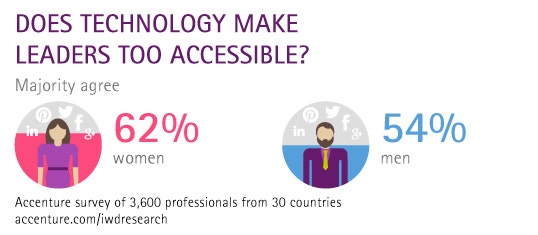The Benefits of Workplace Hyper-Flexibility: Boost Productivity and Morale
Workplace hyper-flexibility is transforming how we work today. It offers many advantages for employees and employers alike.
In today’s fast-paced world, traditional work structures often fall short. Hyper-flexibility allows for adaptable schedules and remote work, fostering a healthier work-life balance. This modern approach helps reduce stress and boosts productivity. As more companies adopt hyper-flexibility, they find it easier to attract and retain top talent.
Employees enjoy the freedom to manage their time and environment. Employers benefit from increased efficiency and happier teams. In this blog, we will explore the various benefits of workplace hyper-flexibility and how it can positively impact your career and business. Stay with us as we delve deeper into this evolving work trend.
Introduction To Workplace Hyper-flexibility
Workplace hyper-flexibility offers numerous benefits. Employees enjoy improved work-life balance. Companies see higher productivity and job satisfaction.
In today’s dynamic work environment, the concept of hyper-flexibility is gaining traction. This approach is reshaping how companies structure their operations. It provides employees with unprecedented freedom and adaptability.
Workplace hyper-flexibility goes beyond traditional remote work. It offers a broader spectrum of flexibility in work hours, locations, and roles. This can lead to higher employee satisfaction and productivity.
But what exactly is hyper-flexibility? And how did we get here?
Defining Hyper-flexibility
Hyper-flexibility in the workplace refers to the ability of employees to manage their work life with minimal constraints. It includes flexible working hours, the option to work from various locations, and the ability to switch roles or tasks easily.
Imagine being able to start your workday at 10 AM instead of 8 AM because it suits your personal schedule better. Or working from a café today and from home tomorrow. Hyper-flexibility allows for this level of personalization.
This approach ensures that employees can balance their personal and professional lives effectively. It also helps companies attract and retain top talent who seek this level of freedom.
Historical Context
The journey towards workplace hyper-flexibility has been gradual. Decades ago, the 9-to-5 workday was the norm. Employees were expected to be at their desks, in the office, every weekday.
However, with the advent of technology, things began to change. The internet and mobile devices made it possible to work from anywhere. The global pandemic accelerated this shift, making remote work a necessity rather than a luxury.
Today, hyper-flexibility is not just a trend but a standard that many forward-thinking companies are adopting. It reflects a significant shift in how we view work and productivity.
Are you ready to embrace hyper-flexibility in your workplace? How would more control over your work schedule impact your life?
These questions are crucial as we navigate this new era of work.
Improving Employee Productivity
Workplace hyper-flexibility can significantly improve employee productivity. Employees can complete tasks efficiently. Flexibility allows them to work in ways that suit them best. This leads to greater job satisfaction and better performance.
Adapting To Individual Work Styles
Every employee has a unique work style. Some thrive in a quiet environment. Others excel in collaborative spaces. Hyper-flexibility lets employees choose their ideal setting. They can work from home, in a café, or in the office. This boosts morale and productivity.
Personalized work environments reduce stress. Employees feel more in control. They can focus better and produce high-quality work. Flexibility ensures they are comfortable and motivated. This leads to consistent productivity.
Optimizing Work Hours
Traditional 9-to-5 hours do not suit everyone. Some people are more productive in the early morning. Others work better in the evening. Hyper-flexibility allows employees to set their work hours. They can work when they are most alert and efficient.
Flexible hours reduce burnout. Employees can balance work and personal life better. They can attend to personal needs without sacrificing productivity. This balance leads to happier, more productive employees.
Enhancing Employee Morale
Workplace hyper-flexibility boosts employee morale by allowing staff to adjust work hours. This flexibility leads to happier, more productive teams.
Enhancing Employee Morale
A happy and motivated workforce can make a big difference in any organization. One of the most effective ways to boost employee morale is by adopting hyper-flexibility in the workplace. This approach allows employees more freedom in how, when, and where they work.
Work-life Balance
A key benefit of hyper-flexibility is the improved work-life balance.
When employees have control over their schedules, they can better manage their personal and professional lives. This balance can lead to increased job satisfaction.
Imagine being able to attend your child’s school event without worrying about work. This flexibility can make you feel valued and respected as an employee.
Reduced Stress Levels
Another significant advantage is the reduction in stress levels.
Stress often comes from rigid schedules and high demands. Hyper-flexibility helps by allowing employees to work during their most productive hours.
Think about the last time you felt overwhelmed by deadlines. Now, imagine having the option to shift your work hours to when you feel most focused. This can make a huge difference in reducing stress.
Wouldn’t you agree that less stress leads to a happier, healthier work environment?
By focusing on enhancing employee morale through hyper-flexibility, companies can create a more engaging and productive workplace.
Attracting And Retaining Talent
In today’s competitive job market, attracting and retaining top talent is more crucial than ever. Workplace hyper-flexibility can be a game-changer. Companies that offer flexible work options often stand out to potential employees, and here’s why:
Appealing To Top Talent
Top talent often looks for more than just a high salary. They seek a work-life balance and the freedom to manage their schedules. Offering hyper-flexibility shows that your company values their time and personal life.
Imagine a highly skilled software developer who wants to start their day early to pick up their kids from school. If your company offers flexible hours, you are more likely to attract this candidate. They can work when they’re most productive, which benefits both parties.
This flexibility also allows you to tap into a global talent pool. You are not restricted to your local area. You can hire the best person for the job, regardless of their location.
Reducing Turnover
High employee turnover is costly and disruptive. Hyper-flexibility can help reduce this. Employees who have control over their work schedules are generally happier and more loyal.
Think about your current team. Wouldn’t they appreciate the option to work from home if they have a sick child? Or the ability to adjust their hours to avoid rush hour traffic? These small changes can make a big difference in their job satisfaction.
Moreover, offering flexible work options can improve mental health. Employees who feel trusted and valued are less likely to look for other job opportunities. This, in turn, reduces turnover rates and helps maintain a stable, experienced workforce.
So, how flexible is your workplace? Could a little more flexibility help you attract top talent and keep your current employees happy? Consider the benefits and take the next steps to make your workplace more flexible. Your team will thank you.
Implementing Hyper-flexibility
Implementing hyper-flexibility in the workplace boosts employee satisfaction and productivity. It allows teams to adapt quickly to changing needs. This flexibility fosters a more dynamic and responsive work environment.
Implementing Hyper-Flexibility
Adopting hyper-flexibility in the workplace can be a game changer. It allows employees to choose where, when, and how they work. This freedom can lead to increased productivity and satisfaction.
To successfully implement hyper-flexibility, you need the right approach. Below are some key factors to consider.
Technology And Tools
Having the right technology is crucial. High-speed internet and reliable software are just the beginning.
Consider using collaboration tools like Slack or Microsoft Teams. These platforms make communication seamless.
Project management tools like Trello or Asana can also help. They keep everyone on the same page, even if they are miles apart.
Don’t forget cybersecurity. Protect your data with VPNs and secure cloud storage.
Training And Support
Training is essential for hyper-flexibility. Make sure everyone knows how to use the new tools.
Offer regular training sessions. This keeps skills sharp and up-to-date.
Support should be ongoing. Have a dedicated IT team to help with technical issues.
Encourage a culture of continuous learning. This keeps everyone engaged and adaptable.
Is your team ready for hyper-flexibility? The right tools and training can make all the difference.
Hyper-flexibility can revolutionize your workplace. Embrace it with the right strategy, and watch your team thrive.
Challenges And Solutions
Workplace hyper-flexibility offers many benefits. Yet, it also presents challenges. Addressing these challenges is crucial for a smooth transition. Companies need practical solutions to overcome obstacles.
Overcoming Resistance
Employees may resist changes. They fear the unknown. Clear communication helps ease these fears. Explain the benefits of hyper-flexibility. Provide training sessions. These sessions can help employees understand new systems. Encourage open dialogue. Listen to employee concerns. Address these concerns promptly.
Ensuring Accountability
Accountability is a concern with hyper-flexibility. Set clear expectations. Define roles and responsibilities. Use performance metrics. Track progress regularly. Offer feedback. Positive feedback motivates employees. Constructive feedback guides improvements. Use digital tools. Tools help monitor tasks and deadlines. Ensure transparency in processes. This builds trust and accountability.
Case Studies And Examples
When it comes to adopting hyper-flexibility in the workplace, some companies have not only embraced it but thrived. Real-world examples provide valuable insights into how different strategies can be effectively implemented. Let’s dive into a few case studies to see what successful companies have done and the lessons they offer.
Successful Companies
Microsoft: Microsoft has been a pioneer in workplace flexibility. By allowing employees to choose their own working hours and locations, Microsoft has seen a significant boost in productivity. Employees report higher job satisfaction and better work-life balance.
Google: Google offers a wide range of flexible work options. Employees can work remotely, choose their hours, and even take extended time off for personal projects. This hyper-flexibility has led to increased creativity and innovation, making Google a leader in tech.
Buffer: Buffer has implemented a fully remote work model. By giving employees the freedom to work from anywhere, they have attracted top talent from around the world. This approach has not only expanded their talent pool but also led to higher employee retention rates.
Lessons Learned
Trust is Key: Trusting your employees to manage their own time and tasks is crucial. Companies like Microsoft and Buffer have shown that when employees feel trusted, they are more likely to take ownership of their work.
Communication is Essential: Successful companies prioritize clear and consistent communication. Google, for instance, uses various tools and platforms to ensure everyone stays connected, regardless of their location.
Flexibility Needs Structure: While hyper-flexibility offers freedom, it also requires guidelines. Microsoft provides frameworks for remote work to help employees stay productive and aligned with company goals.
Focus on Results: Measuring performance based on outcomes rather than hours spent working is effective. Google evaluates employees by their contributions and results, not by their presence in the office.
Would your company benefit from implementing hyper-flexibility? Consider these examples and lessons as you explore new ways to enhance your work environment.

Credit: www.linkedin.com
Future Of Hyper-flexible Workplaces
The future of hyper-flexible workplaces is bright and full of potential. Companies are increasingly adopting flexible work models. This shift brings numerous benefits for both employees and employers. Flexibility can lead to higher productivity, better job satisfaction, and improved work-life balance. Let’s explore the emerging trends and predictions for the future of hyper-flexible workplaces.
Emerging Trends
Remote work is becoming the norm. More companies are allowing employees to work from anywhere. This trend is expected to continue growing. Hybrid work models are also gaining popularity. Employees split their time between the office and remote locations. Flex hours are another emerging trend. Workers can choose their start and end times. This flexibility helps accommodate personal needs.
Predictions And Insights
Experts predict that hyper-flexible workplaces will become standard. Technology will play a key role in this shift. Tools for virtual collaboration will improve. This will make remote work easier and more efficient. Employee well-being will be a focus. Flexible work can reduce stress and burnout. Companies will invest in mental health support. They will also create policies to support flexible work arrangements.

Credit: newsroom.accenture.com
Frequently Asked Questions
What Are The Benefits Of Flexibility In The Workplace?
Flexibility in the workplace improves work-life balance, boosts productivity, reduces stress, and enhances employee satisfaction. It attracts and retains top talent.
What Are The Benefits Of Remote Work Flexibility?
Remote work flexibility boosts productivity, reduces commute stress, and enhances work-life balance. It also attracts top talent and saves costs on office space.
Why Employees Need Workplace Flexibility For Success?
Employees need workplace flexibility for better work-life balance, increased productivity, and improved job satisfaction. Flexibility reduces stress and burnout. It also attracts and retains top talent, fostering a positive work environment.
Why Is Being Flexible An Important Work Skill?
Being flexible is crucial because it helps adapt to changes, solve problems efficiently, and meet diverse work demands. Flexibility enhances teamwork and productivity.
Conclusion
Workplace hyper-flexibility offers many benefits. It enhances productivity and employee satisfaction. Flexibility promotes a healthy work-life balance. This can lead to lower stress levels. Employees feel more valued and motivated. Companies can attract top talent. They also retain experienced workers.
Adapting to change becomes easier. Embrace workplace hyper-flexibility. Enjoy a happier, more efficient team.


